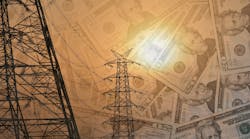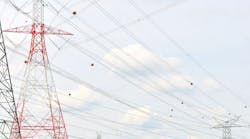Asset investment sustains the lifeblood of electric utilities, which is the revenue mainly derived from moving electrons across meters reliably, safely, and efficiently. For years, a guiding metric for asset investment has been achieving that four nine’s and even five nine’s reliability grade, i.e.: 99.999% availability. However, once straightforward, practically binary asset investment decisions are now clouded by shifting priorities and expectations on the part of customers, regulators, and stakeholders. How should utility decision makers make asset investment decisions for the future to protect customers and their shareholders?
Before answering this question, it may be worth mentioning some of the forces at play in the power sector. First, it is potentially the most capital-intensive, broad-scale industry. According to Statista, shareholder owned electric utility spending more than doubled from 2006 to 2019, reaching a nosebleed level of US$124 billion. Yet, utilities are still playing catchup on upgrading equipment that has exceeded its useful life. Concurrently, they are striving to install smart grid technology, systems and processes that will allow them to operate and compete in a more fluid environment. Even with the pandemic, it is estimated that spending levels jumped to $139 billion in 2020. Complicating asset investment further, every few years Mother Nature throws a curve that demonstrates the limitations of traditional industry standards and practices. The extreme cold this February is a prominent example. A stark reminder of 2020 events courtesy of Mother Nature can be found here: The top 15 most significant weather-related outages of 2020 (eaton.com).
So, what is the best asset investment strategy? One consulting firm advises prospective clients to invest where the greatest potential for improvement exists. Well, yeah, but who decides such complex issues and what constitutes an improvement? Is it a reduction in SAIFI (interruption frequency), momentary outages, or perhaps greater efficiency? This consulting firm basically suggests covering all the bases, but they also highlight some principal T&D asset investment objectives: increase reliability, improve the customer experience, and reduce O&M costs. The firm suggests that the strategy be backed up with data and system analytics and acknowledges that customer needs and expectations may vary by geography and segment. With the addition of improving resiliency, this list of asset investment objectives appears consistent with the strategy favored by many utilities.
However, asset investment in the 21st century also must avoid a growing risk: changing energy markets and regulatory shifts. Some states are joining forces through umbrella organizations such as the National Association of Regulatory Utility Commissioners (NARUC) and the National Association of State Energy Officials (NASEO) to conduct comprehensive electricity planning to help avoid conflicting regulations and market landmines. The above organizations formed the Task Force on Comprehensive Electricity Planning to perform this function across 15 states and territories (see: Task Force on Comprehensive Electricity Planning - NARUC). A major challenge with such efforts is ensuring potentially diverse, state-driven policy goals do not interfere with the fundamental reliability, resiliency, and cost equity goals of electric utility asset investment.
In its 2020 Strategic Directions: Smart Utilities Report annual survey of electric, water and natural gas utilities, Black & Veatch reported that more than 600 survey respondents cited budget constraints, competing priorities, and regulatory hurdles as the top three barriers to one area of asset investment- distribution modernization. The report also highlights categories of investment that may be somewhat bulletproof (my characterization), in that they will likely benefit utilities under a range of future scenarios. Analytics and risk management tools as well as network, communications and cybersecurity improvements are examples.
A growing percentage of utilities have turned to advanced analytics, using increasingly economical sensor and communication options, to monitor asset health, predict failure in advance and determine utilization rates of T&D infrastructure. In some cases, the enabling technology is installed in new equipment and in other cases the technology is part of a separate data collection or asset management package. Regardless, it helps managers make better asset investment decisions, potentially with more money to do so because of avoided excess maintenance work and premature asset replacements.
On March 3, the American Society of Civil Engineers released its 2021 Report Card for America’s Infrastructure. The U.S. earned an overall grade of C- compared to a D+ bestowed on our Nation four years ago (see: America's Infrastructure Report Card 2021 | GPA: C-). While the grade given to energy infrastructure improved since the 2017 report from a D+ to a C- (hooray!), ASCE obviously is not satisfied. The organization acknowledges a substantial increase in capital investment by electric companies, which was a criticism in 2017, but argues distribution reliability and storm hardening are still lacking. The power industry is on it and we are working hard to make the best decisions to support our customers and shareholders long-term.


